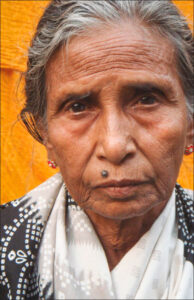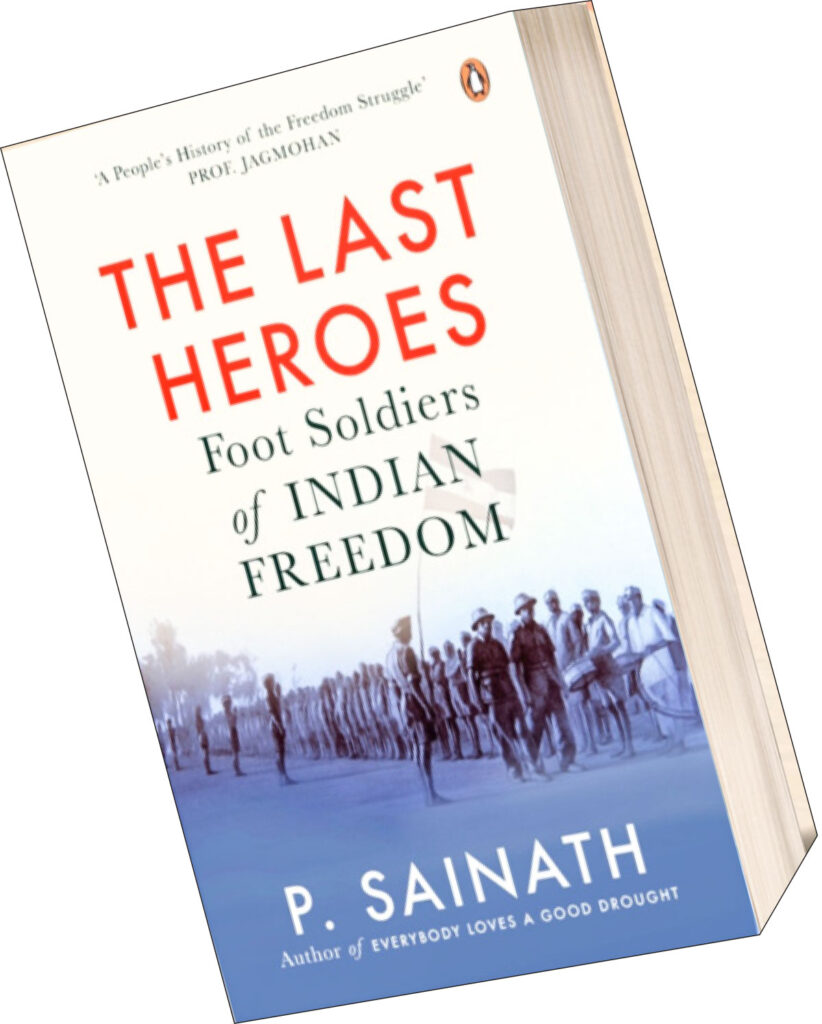

January 26 and February 18. The first is Republic Day. And Republic Day celebrates the date on which the Constitution came into effect, back in 1950. That’s the day, this year, that I started reading a book published on August 15, 2022. The Last Heroes: Foot Soldiers of Indian Freedom by P Sainath carries a quotation on the flyleaf from Captain Bhau (Ramchandra Sripati Lad), leader of the Toofan Sena, Kundal, Sangli, Maharashtra. Who is Captain Bhau, you might ask, and what’s that he said. A freedom fighter, he passed away in 2022, at age 100. ‘We fought for two things — for Freedom and Independence,’ he said. ‘We attained Independence.’ Stop, think, and the import of his words begin to sink in. Our nation is independent, but are we the people free?
Over many years of tracking down and recording the experiences of the few remaining foot soldiers of India’s freedom struggle, award-winning journalist Sainath unearths inspiring stories of women and men from across the country. They are the unsung, unknown heroes without whose commitment and bravery, independence from British rule would not have been possible. After all, there is no revolution, however nonviolent, without people. No leaders, either. Tragically, though, many of them were not only forgotten after Independence, they had to endure great hardships. Although there is a government scheme to support freedom fighters, not only is the compensation meagre, the criteria for receiving support is rigid.
Take the instance of Laxmi Indira Panda from Jeypore in Koraput, Odisha. ‘Because I never went to jail, because I trained with a rifle but never fired a bullet at anyone, does that mean I am not a freedom fighter?’ she asks. Born in erstwhile Burma to parents who worked laying railway lines, Laxmi, or Lakhmi, says her parents were killed in a British bombing sortie. After that she wanted to fight the British and so she joined Netaji’s INA (Indian National Army) when she was in her early teens. The book features a grainy photograph of her wielding a rifle and the only reason we even hear of her is thanks to a journalist who had a young friend who sometimes asked for money to help his grandmother buy medicines and so on. Intrigued and somewhat suspicious, the journalist did some digging and discovered that the grandmother was none other than Lakhmi who, at age 13, had been cooking in the INA’s forest camps for those who went to fight. For years now, she had been working as domestic help.
Only by reading these stories will we know, and be reminded, that we the people are seasoned with the salt of such earth and the only way to honour their memory is to enable freedom for all, from all.
You will be moved and motivated upon reading these stories collated by the People’s Archive of Rural India (PARI), an online resource founded by Sainath. Interestingly, every chapter in the book ends with a QR code for the PARI Freedom Fighters Gallery. Click and you will learn more. But to return to Captain Bhau. Back in 1943, while the Bengal famine raged, he and his fellow underground revolutionaries intercepted the Pune-Miraj train carrying the salaries of those on the British payroll and commandeered it. They hauled in a princely sum of ₹19,175; it would have bought over 60,000kg of rice at the time. “‘It is unfair to say we looted the train,’ Captain Bhau says sharply. ‘It was money stolen by the British rulers from the Indian people that we took back.’”
Mallu Swarajyam confronted the British with a slingshot; Baji Mohammed led his group exhorting them, ‘Marenge lekin maarenge nahin’ (we will die but we will not kill; Demati Dei ‘Salihan’ chased away British officers with a lathi after they had burned down and looted her village. For Gandhian H S Doreswamy, in contrast, his pen was his lathi: as the Raj came down on newspapers, ‘the Collector did not enquire why I was registering so many newspapers. … when they shut down one title, I could re-launch another. So when they shut down Pauravani, I started Pauraveera.’ The strategies are mind-boggling, their resolve amazing. Only by reading will we know, and be reminded that we the people are seasoned with the salt of such earth and the only way to honour their memory is to enable freedom for all, from all. That’s January 26.

February 18 marks the death anniversary of arguably one of the most renowned naturalists and wildlife photographers of India, and inarguably one who best combined being a naturalist, photographer and writer. For 46 years, from 1950, the year India became a republic, to1996 when he died, he wrote an uninterrupted column on natural history called ‘Country Notebook’ in The Statesman newspaper. M Krishnan was passionate about black and white photography, wildlife in all its manifestations, and the Tamil and English languages. The last was clearly a legacy from his father, A Madhaviah, who is credited with publishing the first realistic novel in Tamil — Padmavathi Charithram — in 1898. Krishnan, growing up in the still green surroundings of Mylapore in Madras, developed an affinity to the birdlife there as well as the occasional blackbuck and jackal. At 11, he had a mongoose as his pet.
A lawyer by training, he went through various jobs, a trajectory that eventually took him to a small, princely state called Sandur in what is now Karnataka. The hills, forests, fields and shrub jungles of this valley fed and nurtured his love for nature and made him who he was. Sandur was incorporated into the Indian union in 1949, upon which Krishnan returned to Madras and devoted his life to being a fulltime naturalist, writer and photographer.
Not much of his work is in print. But there is a very special, in fact, a limited edition, of a commemorative book of his photographs and writings called Eye in the Jungle, compiled by Ashish and Shanthi Chandola with T N A Perumal, and published by Universities Press (India) in 2006. I had the good fortune to interview Krishnan — shortly before his demise, as it turned out. Sitting there in his sparsely furnished den, surrounded by wallets of negatives neatly labelled and stored away, black and white prints and books on nature, I was mesmerised, immersed in the stories, real stories, he shared for well over an hour. He was a masterly raconteur. I remember especially how he came face-to-face with a rampaging bull elephant and how he quickly rubbed elephant dung onto his body to throw the animal off his human scent.
The book has a detailed biographical sketch by Ramachandra Guha, a plethora of brilliant photographs, and a sensitive selection of excerpts from Krishnan’s writings. Here is a delightful passage about the southern macaque, a species of monkey, from a passage entitled ‘The Misanthropoid’: ‘When it is tired of its restless animal antics the Macaque will sit huddled on a rock, or on a lofty bough, and you will see how vexed and discontented it really is. It just sits on and on, cheerless and inconsolable, and stares moodily at the horizon. … The sun might shine pleasantly and all things about it be bright and cheerful, but there it sits, silent and glum, brooding darkly over its hidden sorrows. Perhaps it is troubled with the first glimmerings of intellect and reason, for these things can be very vexing in their incipient states. If only it were a little more evolved — how smug and satisfied it could feel then, like so many of its betters!’ Too true!
The columnist is a children’s writer and senior journalist.






